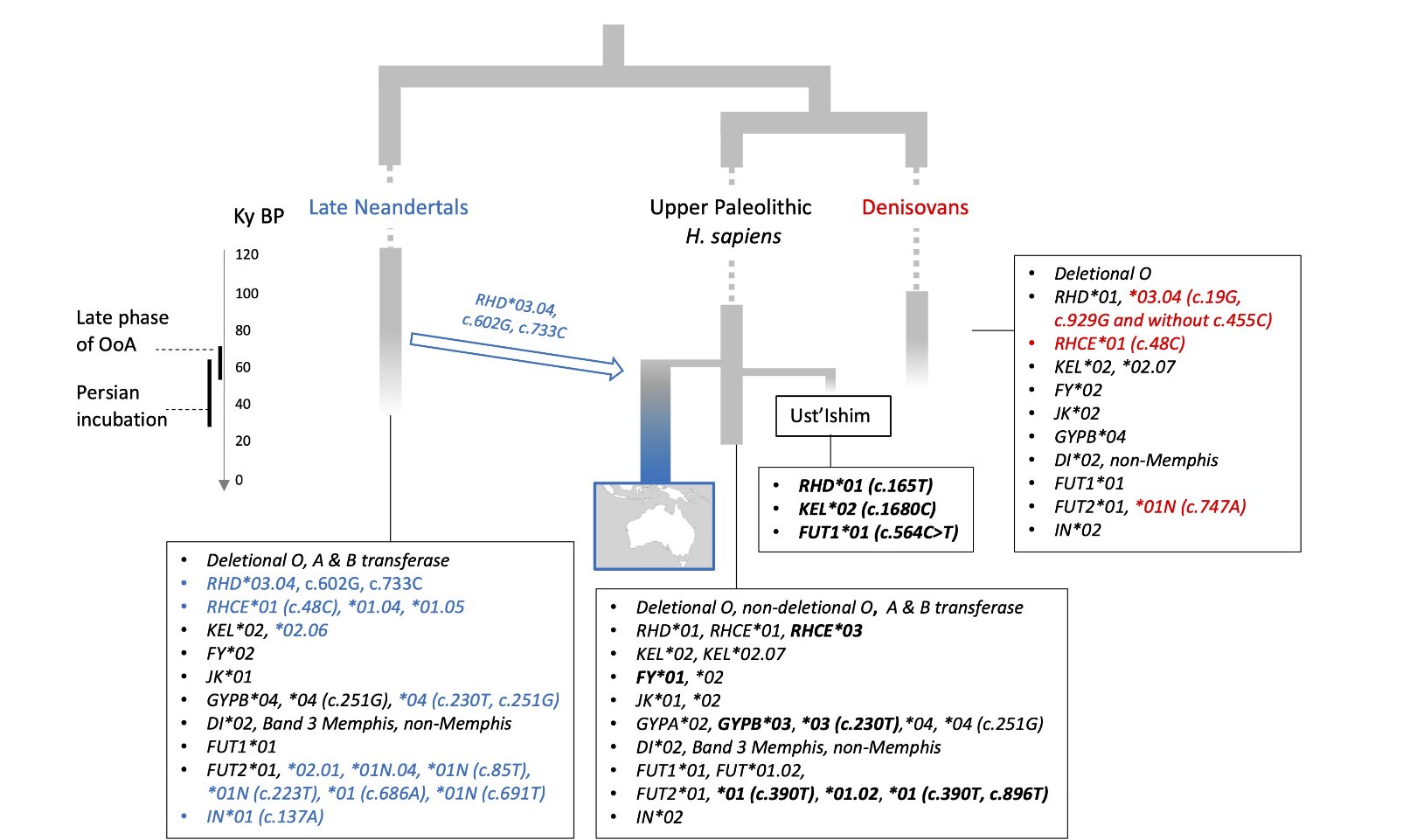What if the disappearance of Neanderthals was due to their blood? 🩸
Follow us on Google News (click on ☆)

For this research, the team sequenced the genes of three groups of hominids: Neanderthals, Denisovans, and Homo sapiens. Their goal was to study the antigens present on the surface of red blood cells, these proteins and sugars that influence our immunity and blood compatibility.
Among these biological markers, the most well-known is the ABO system. But the researchers were particularly interested in the Rh antigens, responsible for the "positive" and "negative" classifications. These antigens notably influence the risks of hemolytic diseases in newborns in case of incompatibility between the mother and the child.
The results revealed a notable difference: Neanderthals possessed a rare variant of the Rh factor, called RhD. This particularity, still present in a tiny fraction of the current human population, was incompatible with other blood types, particularly those of Homo sapiens and Denisovans.
This incompatibility phenomenon could have led to severe complications during pregnancies. A Neanderthal mother carrying a fetus from a Homo sapiens or Denisovan father could develop an immune reaction against her own child. In some cases, this could lead to miscarriages or fatal hemolytic diseases in newborns.

Phylogenetic analysis of blood group alleles in Homo sapiens, Neanderthals, and Denisovans.
Credit: Scientific Reports (2025). DOI: 10.1038/s41598-024-83023-0
If interbreeding between species was frequent, this blood incompatibility would therefore have contributed to a decline in the birth rate among Neanderthals. With a population already weakened by other environmental and competitive factors, this biological handicap would have weighed in their gradual disappearance.
This study sheds light on a factor that has been underestimated until now in the history of Neanderthals. The causes of their extinction remain complex, but it seems that biology played a role as important as the environment or competition with Homo sapiens.
Why can Rh incompatibility be a problem during pregnancy?
The Rh system refers to a group of antigens present on the surface of red blood cells. The most important is the RhD factor, which determines whether a person is Rh positive or Rh negative. This classification plays a crucial role in transfusion medicine and obstetrics.
When an Rh-negative woman carries an Rh-positive fetus, from an Rh-positive father, her immune system can recognize the baby's red blood cells as foreign. She then produces antibodies against these cells, a phenomenon called alloimmunization.
This immune reaction has no consequences during the first pregnancy, but becomes dangerous if another pregnancy involves an Rh-positive fetus. The mother's antibodies can then cross the placenta and destroy the baby's red blood cells, causing severe anemia, or even neonatal hemolytic disease.
Today, this problem is avoided thanks to the injection of anti-RhD gamma globulins at risk. In Neanderthals, a similar incompatibility with Homo sapiens could have contributed to their decline.